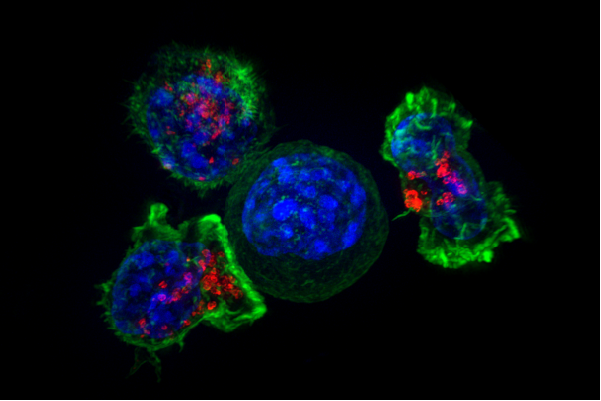
A new type of drug that helps target chemotherapy directly to cancer cells has been found to significantly increase survival of patients with the most common form of bladder cancer, according to results from a phase III clinical trial led in the UK by Queen Mary University of London and Barts Health NHS Trust.
The results are published in the New England Journal of Medicine and were presented at the 2021 American Society of Clinical Oncology’s Genitourinary Cancers Symposium.
Urothelial cancer is the most common type of bladder cancer (90 percent of cases) and can also be found in the renal pelvis (where urine collects inside the kidney), ureter (tube that connects the kidneys to the bladder) and urethra. Globally, approximately 549,000 new cases of bladder cancer and 200,000 deaths are reported annually.
One of the most widely used treatments for this type of cancer is chemotherapy which works by targeting all the cells in the body, successfully acting upon cancer cells, but also affecting non-cancer cells, causing side effects.
A new class of drugs known as ‘antibody-drug conjugates’ (ADC) work by having an antibody attached to a chemotherapy-like drug. The antibody specifically targets and attaches to the cancer cells, bringing with it the chemotherapy-like drug, allowing it to only act upon those cancer cells and ignore normal cells in the body.
The trial involved 608 patients in 19 countries and tested a new ADC drug enfortumab vedotin, developed by Astellas Pharma Inc. and Seagen Inc., in adult patients with locally advanced or metastatic urothelial cancer who were previously treated with platinum-based chemotherapy and an immunotherapy drug called a PD-1/L1 inhibitor. It found that:
- The risk of death was 30 per cent lower with the new drug than with chemotherapy, with a median survival of approximately 13 months for the new drug.
- Median progression-free survival, which is the time without progression of cancer, was 5.6 months for the new drug vs. 3.7 months for chemotherapy
- Overall response rate, the percentage of patients with either complete or partial response, was 40.6 percent vs. 17.9 percent of patients in the chemotherapy arm
- The side effects of the drug were manageable and overall similar to chemotherapy.
Source: Read Full Article